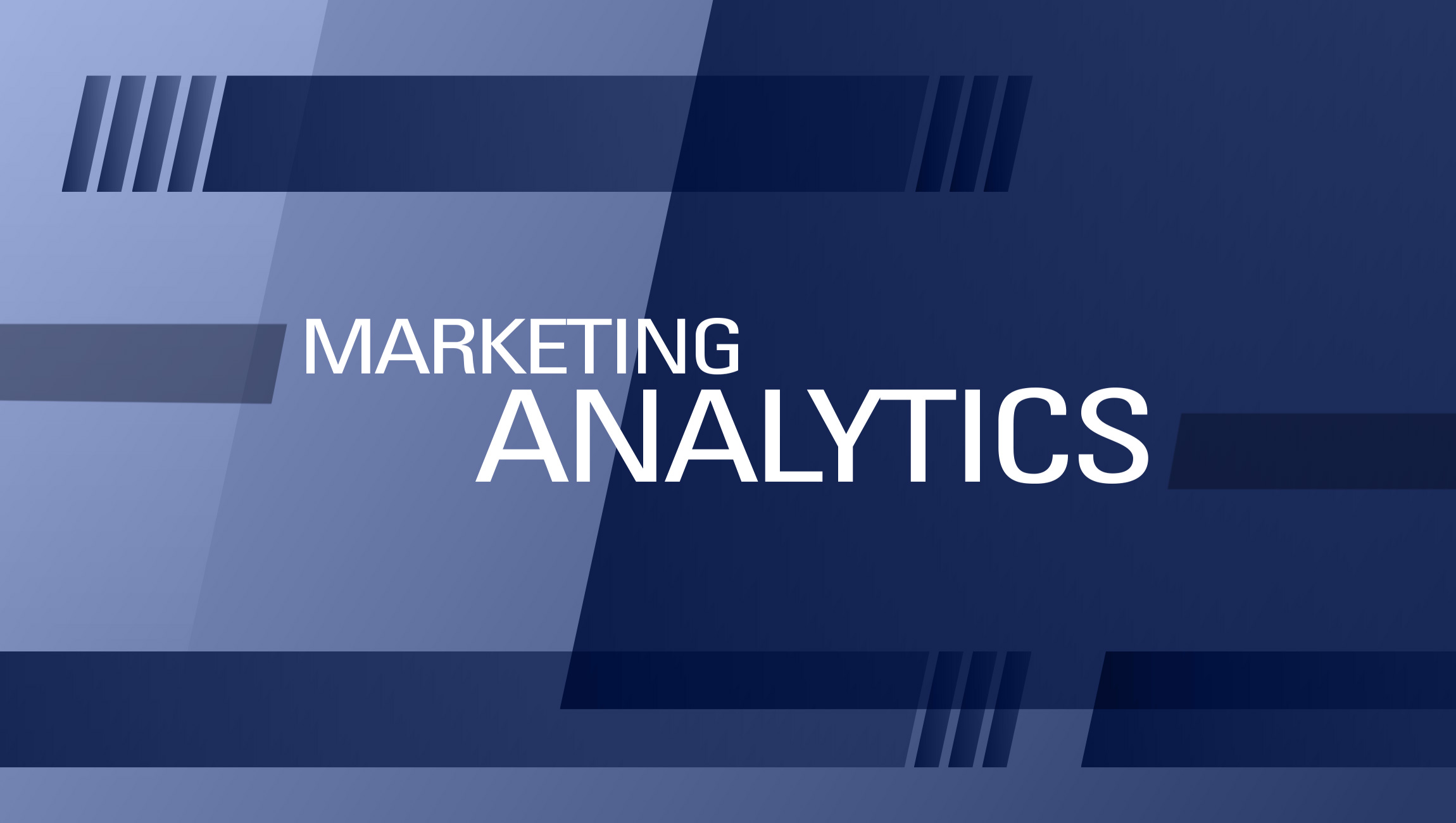If you look back to 2009-2011, you would realize how differently Marketing Teams worked with data and analytics then. The 4P’s of the Marketing Mix remained the crux of every successful branding and product pricing. Analytics was restricted mostly to offline data collection aggregated from retail stores, web data, and primitive email marketing contact lists. Today, the whole game of Marketing Analytics has transformed. The coming of age for analytics within Mobile, Social, Web, In-app, Video and E-commerce has pushed the barriers for modern CMOs. Though we take cue from the 4P’s, but the horizon has expanded massively to address a much larger audience through new-age analytics game. To understand the basics of how CMOs deliver on Personalization, Customer Experience, and Real-time conversations with customers, you should have a fair knowledge of Marketing Analytics.
It would be safe to point out that Marketing Analytics in 2019 is more about Customer Analytics than anything else.
This article will help you understand the essentials of Marketing Analytics, and how it can improve your experience with MarTech tools and stacks.
What is Marketing Analytics?

Marketing is, ‘putting the right product in the right place, at the right price, at the right time, to the right customer.’ Whether you are selling your product to a customer at your brick-and-mortar or at online platforms, Marketing Analytics is necessary to churn value out of the entire Marketing function.
Definition and Best-Practices
Here are five industry-focused definitions and practices that you should memorize for MarTech quiz.
For obvious reasons, we decided to start with mother of all Analytics – Google Analytics.
Google Analytics bifurcates any Marketing analytics into two streams – Basic and Advanced. Defining based on application, advanced marketing analytics is the process of organizing, filtering, segmenting and creating unique ‘Customer Dimensions or Profiles’ to understand their behavior across various online channels. These insights can be used to market, remarket and retarget unique Marketing campaigns to a unique set of customer profiles through dynamic capabilities.
A simple Marketing Automation tool like HubSpot makes working with analytics look like a cakewalk. Users can simply break down any report by the contact or company-level properties in their contact list or CRM to discover key trends in your data over time. It can then trigger automation workflows to match efforts with various Marketing activities on the Web, Email, Social Media, Sales chats, and so on.
According to Big Data analytics company SAS, Marketing Analytics comprises the processes and technologies that enable marketers to evaluate the success of their Marketing initiatives. Advanced Marketing analytics enable Marketing teams to not only analyze the present, but also empower them to predict, disrupt and influence the future outcomes through various analytic-driven insights and actions.
CoSchedule defines Marketing Analytics as an effort to determine the effectiveness of channels and tactics, audience behavior, and measure revenue and ROI using an array of tools available for gathering and analyzing data.
Online advertising enabler, Wordstream explains the practical side of Marketing Analytics. Wordstream states that “Marketing Analytics, Internet (or Web) Marketing Analytics in particular, allow you to monitor campaigns and their respective outcomes, enabling you to spend each dollar as effectively as possible.”

According to McKinsey & Company, “more than 85 percent of companies that report extensive use of customer analytics (in terms of IT, analytics, and its execution) claim their company achieves a significant value contribution from customer analytics.” Marketing Analytics drives Corporate Performance. Extensive use of customer analytics impact Sales and Marketing Performance, Profit and ROI.

NGData states –
“Marketing Analytics involves the technologies and processes CMOs and marketers use to evaluate the success and value of their efforts.” NGDATA also outlines the ways and means of applying basic and advanced analytics at various levels of the Marketing funnel.
In simple terms, Marketing Analytics is defined as the process of evaluating and reporting the performance of various Marketing initiatives. This is accomplished by analyzing data from various Marketing and Communication channels such as the web, mobile, app, social media, email, location, retail outlets, and traditional commerce. Every marketer is expected to have a fair analytical bend of mind to apply Business Intelligence techniques to measure ROI, and Marketing Attribution/Marketing Effectiveness.
This HubSpot blog is a helpful resource in better understanding “what is Marketing Analytics and Its Useful Terms?”
With the advent of Data Science for Business Intelligence, Marketing teams have a far better adaptation of customer and audience data consolidated into a contemporary CRM dashboard.
Top Trends in Marketing Analytics Relevant to Every Marketer
Ever-Evolving Nature of Marketing Funnels, Flipped Funnels, and Flywheels
I found out a very useful explanation of Marketing Funnels in modern CMO’s context. Credit to the Campaign Monitor team.

Marketing Analytics can be applied to any stage of the customer journey in this funnel. This blog explains how to use a modern Marketing Funnel. Earlier this year, we covered HubSpot’s Flywheel campaign in Pune. Marketing Analytics can be applied to Flywheel concept as well.
Here is the link to Flywheel model.
Marketing Analytics Powered by Augmented Intelligence (AI)
The AI scenario is evolving at a disruptive pace. Marketing and Sales companies have a much stronger grip on the analytics industry in 2019 compared to earlier years. Marketing Analytics teams are gung-ho about the perceptive impact of Augmented Intelligence, Big Data Visualization, Neural Networks, Conversational AI, and Mobile Location Data.
It should not come as a surprise to AI-focused companies that are scouring top talent in Marketing and Sales to lead their Analytic banks. For instance, Gartner has stated that by 2020, innovations in Augmented Analytics, Data Science, Machine Learning and Embedded Analytics would drive new purchases of analytics and BI software and tools. CMOs would be investing in Cloud suites that offer these analytics for Sales, Marketing and Customer Service.
Salesforce, Genesys, Adobe, Oracle, and SAP are leading the path in this massively disrupted MarTech ecosystem.
Chase the CDP Trends
You can truly jump steps in Marketing Analytics journey if you fully-understand ‘how Customer Data Platforms work?’
From data wrangling to owning data, there is everything that you can analyze with CDP offered by full-pack MarTech vendors. By leveraging a CDP, you will be automating the journey of analytics for various data points, such as:
- Personally Identifiable Information (PII),
- First, Second, Third party,
- Anonymous,
- Data Management Platform data and interaction history
Social Media: An Unassailable Marketing Armor
If you are to succeed as a successful analyst, you ought to decipher the trends in Social Media Intelligence and Analytics. From creating personalized email messages to delivering customized mobile messages, the use of social media analytics is ubiqutous component of any intelligent marketing campaign today.
Explainable AI (XAI) for Customer Experience
Yes, it’s an established fact that AI and AR VR hold the key to succeeding with accurate Marketing Analytics.
According to Salesforce’s 2019 State of Marketing insights, AI, Virtual Reality, and Augmented Reality offer innovative ‘Engagement’ opportunities to every marketer – B2C, B2B, or both.
It states –
“B2B marketers are swiftly adopting Artificial Intelligence (AI) to power the “Amazon-like” personalized customer experiences now expected by business buyers. In the past year, AI usage has seen 23% growth amongst B2B marketers, who are increasingly using the technology from within their marketing platforms to optimize mid-cycle engagement.”
But, those who work with XAI, the future is failure-proof. Well, almost!
Marketing Analytics are heavily dependent on human decision-making. However, we foresee a future where this aspect would be completely taken over by Machine Learning algorithms to solve puzzles of customer data and mobile data-based experiences. Marketer’s challenge in working with AI Black Box continues to be a major pain-point for CMOs who are either working with AI or are planning to invest in the technology for their future.
According to Forrester Research, those that excel in the adoption of AI and Machine Learning for Sales and Marketing “will steal $1.2 trillion dollars from those that don’t by 2020.” Explainable AI could enable lagging Marketing companies compete on a fair playing field. According to simMachines, 100% of marketers agree that it’s risky not to adopt Explainable AI enabled Dynamic Predictive Segmentation.
There are hundreds of free (Google Analytics Academy) premium Marketing Analytics courses available (such as Coursera and Berkley’s MicroMasters Program) for students, marketers and entrepreneurs. Our MarTech RADAR companies are leading as knowledge bank for MarTech learners working closely with Marketing Analytics and related Intelligent Automation techniques.
Real-Time Experimentation using a Mix of MarTech and AdTech
The rise of Digital Advertising has opened up new avenues for businesses of all sizes and scale. New-age advertising platforms are now accessible to smaller business groups, which means they can still reach to Marketing targets without shelling out millions that are usually set aside for TV advertising. With smaller analytical groups, Marketing teams can still make ROI from their target audience. With Marketing Analytics combined with Digital Advertising techniques, marketers can not only understand customer sentiment but also influence their choice through pricing, service and loyalty-based programs.
According to Deloitte, the future of Marketing Analytics lies with how well MarTech users are able to apply micro-targeting and micro-segmentation strategies to their highly specific buyers.
Listen, Do Surveys
Surveys are a powerful tool to truly understand the nature and sentiment of target audience. It’s not just a great data collection tool but also a steroid for listening to your customers and prospects. Tools offered by SurveyMonkey are helpful to build Marketing efforts and decipher demographic information which can be further paired with analytics to execute unique actions. In short, surveys may look deceptive with their old-school templates but when applied with Contextual Personalization, it turns the game on its head.
To participate in our Editorial programs, please drop us a line at news@martechseries-67ee47.ingress-bonde.easywp.com











